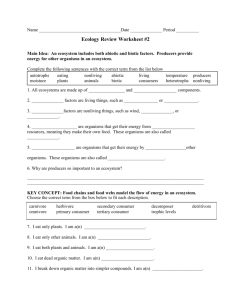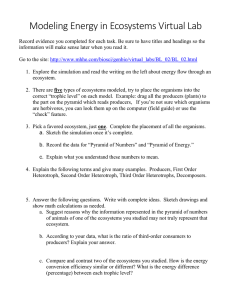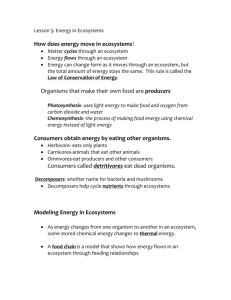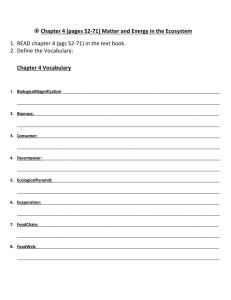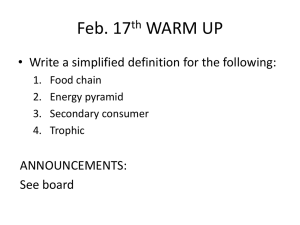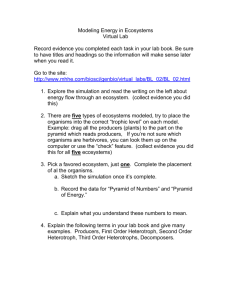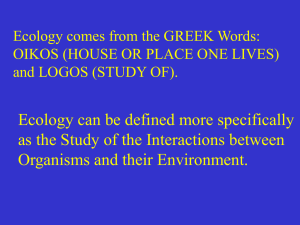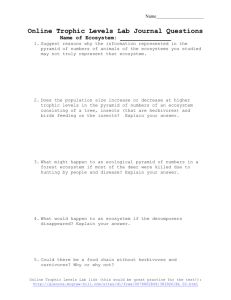Biology Energy Flow Through an Ecosystem
advertisement
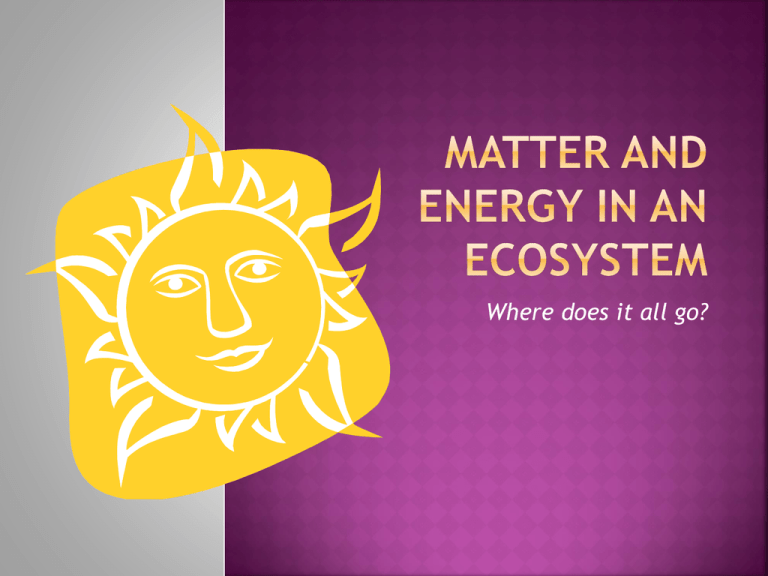
Where does it all go? Trace the flow of energy and nutrients (matter) in the living (BIOTIC) and nonliving (ABIOTIC) factors in the environment. The study of the interactions between organisms and their environment. Levels of Organization large smallest group one all organisms interacting living individual of region unit similar different organs and nonliving ofliving with working living the cells kinds same thing organized of together kind populations things typical tissues living interacting plants working to ininwork one an and area within together ecosystem a animals certain area that includes several ecosystems cell Energy in an ecosystem originally comes from the sun Energy flows (moves) through an ecosystem from producers to consumers Use sunlight as their source of energy Producers contain chlorophyll, a pigment that absorbs and traps light energy Examples: Plants Algae Some bacteria, protists Niche = “job”/”role” Captured light energy is transformed into a chemical energy that can be used by ALL organisms (PHOTOSYNTHESIS) Other producers that do not use light; use other chemical present in the environment to produce a usable chemical energy (CHEMOSYNTHESIS) Tube worms Black smoker (thermal vent) Heterotrophs eat other organisms to obtain energy Herbivores – eat only plants Carnivores – eat only other animals (meat) Omnivores – eat both plants and meat Scavengers – eat dead, waste By definition, are considered consumers but they are “special”….they are responsible for breaking down dead and waste to its smaller parts to put back into the soil to be reused (“recyclers”) Examples: fungi some bacteria some protists The purpose of many symbiotic relationships is to obtain energy and matter needed for survival. Energy flows through an ecosystem in ONE direction From producers to various levels of consumers A complex model that shows many possible paths through an ecosystem is called a FOOD WEB More realistic Simple model that show one path through an ecosystem is called a FOOD CHAIN ARROWS represent direction of energy flow When constructing your food chain, you must… 1. 2. 3. Start with a producer Use ARROWS to show energy flow Minimum of 3 links (see example below) HOMEWORK: Create 3 food chains using the above rules. Each level in a food chain/web is a TROPHIC LEVEL “trophic”- feeding Each level depends on the one before it for energy and matter Graphic representations of the relative amounts of energy or matter at each trophic level Include: Pyramid of Energy Pyramid of Biomass Pyramid of Numbers We stated that these were graphic representations of the relative amounts of energy or matter at each level Large amounts of energy are lost at each link, thus only a small portion is passed to the next level As you go up the pyramid, you find less food/energy available for use – only 10% is passed on from the previous level We call this the “10% Rule”


